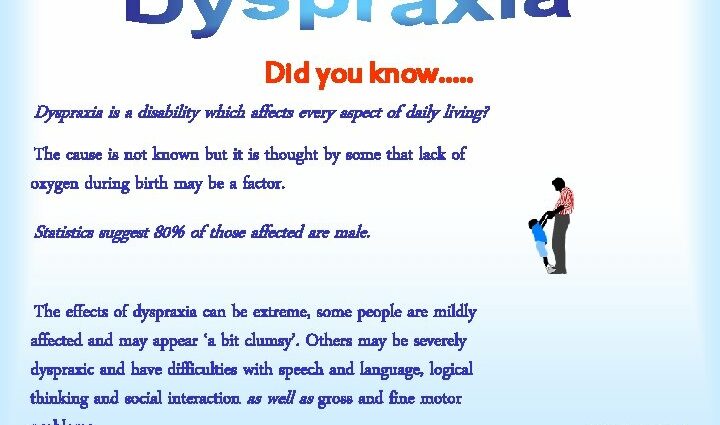In children, developmental coordination disorder (CDD), also called dyspraxia, is a frequent disorder (5% on average according to Inserm). The children concerned have motor difficulties, especially in planning, programming and coordinating complex movements. For activities requiring a certain motor coordination, they thus have lower performance than those expected of a child of the same age in his daily life (dressing, toilet, meals, etc.) and at school (writing difficulties). . In addition, the latter may present a difficulty in evaluate numerical quantities in a precise way and be concerned by anomalies of location and spatial organization.
If children with dyspraxia may have math problems and in learning numbers, the mechanisms involved are not established. Inserm researchers explored this difficulty, by conducting an experiment with 20 dyspraxic children and 20 children without dys disorders, aged around 8 or 9 years old. It appeared that the innate sense of the number of the former is altered. Because where a “control” child can identify the number of objects in a small group at a glance, a child with dyspraxia has a harder time. Dyspraxic children further present a difficulty in counting objects, which could be based on disturbance of eye movements.
Slower and less accurate counting
In this study, dyspraxic children and the “control” children (without dys disorders) passed two types of computer tests: on a screen, groups of one to eight points appeared, either in a “flash” way (less than one second), or without limit of. time. In both cases, the children were asked to indicate the number of points presented. “When they have a time limit, the experience appeals to the children’s capacity for subitizing, that is to say the innate sense of number which makes it possible to instantly determine the number of a small group of objects, without needing to count them one by one. In the second case, it is a count. », Specifies Caroline Huron, who led this work.
Eye movements have also been analyzed by eye-tracking, measuring where and how a person looks using infrared light emitted in the direction of the eye. During the experiment, the researchers found that dyspraxic children appear less precise and slower in both tasks. “Whether or not they have time to count, they start to make mistakes beyond 3 points. When the number is higher, they are slower to give their answer, which is more often wrong. Eye-tracking showed that their gaze struggles to stay focused. Their eyes leave the target and children usually make mistakes of plus or minus one. », Summarizes the researcher.
Avoid “counting exercises as they are practiced in class”
The scientific team thus suggests that dyspraxic children have double-counted or skipped certain points during their counting. It remains to be determined, according to her, the origin of these dysfunctional eye movements, and if they are the reflection of a cognitive difficulty or if they are attentional. To do this, neuroimaging tests would make it possible to know whether differences appear between the two groups of children in certain regions of the brain, such as the parietal region which is involved in the number. But on a more practical level, “this work suggests that these children cannot build a sense of numbers and quantities in a very solid way. », Notes Inserm.
Although this problem may cause later difficulties in mathematics, the researchers believe that it might be possible to suggest an adapted pedagogical approach. “Counting exercises as they are often practiced in class should be discouraged. To help, the teacher should point to each object one by one to help develop number sense. There is also software suitable to help count as well. », Underlines Professor Caroline Huron. Scientists have thus developed specific exercises to help these children within the framework of a collaboration with “the Fantastic Schoolbag”, an association which wishes to facilitate schooling for dyspraxic children.










